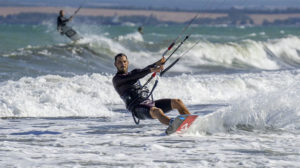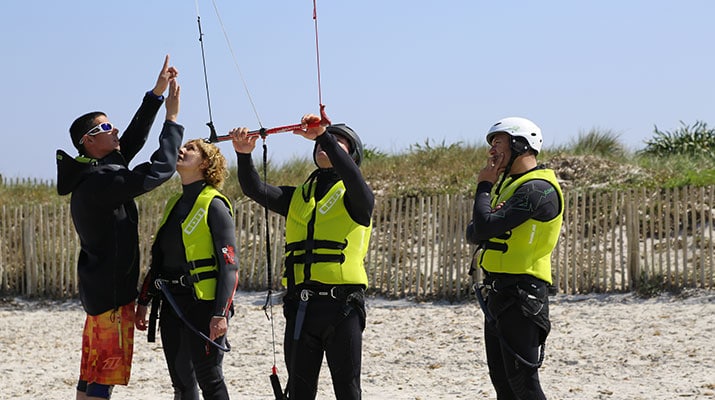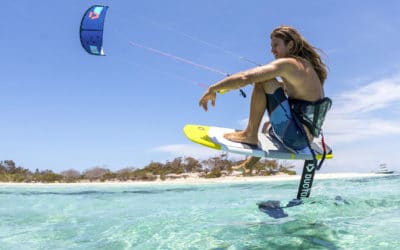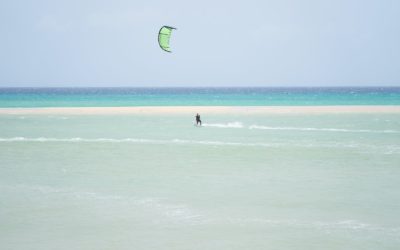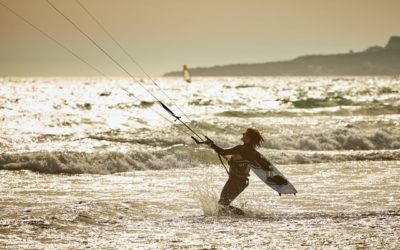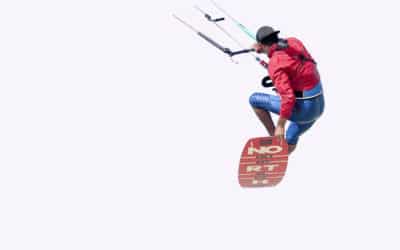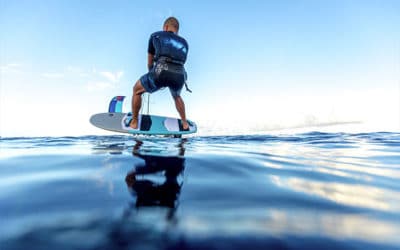Learn how to ride the wind in kitesurf
Starting kitesurfing often means asking yourself a thousand questions to which the answers seem to be many… And very often having to take into account many parameters that nature imposes on us, or offers us, depending on the state of mind of the moment!
To answer all these questions, let’s look at a few rules and tricks for getting upwind. Indeed, the wind is not always sideways, and after a good surge, you will have to get back into the wind bed, i.e. luff up.
Start by visualising the wind bed, understanding the prevailing gusts, and setting reference points
Prepare yourself and land on the beach for a while. For beginners in kitesurfing, this is an essential exercise, as the sixth sense of feeling the wind is not a gift, it is learned with patience. It is always useful to observe those who are already on the water to understand the prevailing wind, but not everyone has the same level and you will have to appropriate your own sensations. If feeling the wind is not yet automatic, stand facing the wind (this is when the wind makes the same noise in both ears!) and take a landmark: a bell tower, a significant tree… The wind is rarely constant, but this exercise will help you in your first ascents.
These few minutes of getting to grips with the current conditions are decisive. The wind can be stable, but it can also be very capricious under the clouds. If the conditions are too chaotic, your ascent will be more technical, but not impossible. The important thing is to remain pragmatic and reconcile technique with the conditions of the moment.
Adapt your equipment to this exercise
While it is nice to be carried along, it is worthwhile to spend a session on upwind sailing, to get used to it and to be comfortable with it in the future.
Don’t think that a light wind will make it easier: most people will tend to increase the size of the sail. It is better to go for a bigger board, as it is the pressure on the board that will make you luff, not the size of the kite.
It is important to understand the effect of speed on wind direction. Your speed creates an apparent wind (like the wind in your hair when you are riding your bike) which shifts the real wind bed on the downwind leg. This allows you to luff beyond the ideal angle with the true wind. So speed allows you to luff more. But this action is done by putting more pressure on the back of the board which will be positioned at 45 degrees to the water surface. An oversized sail will make this difficult, as you will be struggling between the speed of your big sail and a board that is too small to make the upwind run.
Two, three strings to get upwind like a pro!
Going upwind should be a progressive action. You rarely start a session by going straight upwind, well rarely.
If you are starting out, choose a day when going upwind will not be an imponderable, and when this procedure does not condition your return to the beach.
Basically, avoid any unnecessary pressure. Stand at an open angle to the window, find your landmark which indicates the wind bed, and point your board at this landmark.
It is your board that steers you, it is the rudder of the whole. Balance your weight smoothly on the back and on the outside of the board, taking a little speed.
It’s a balance between your kite, the speed to get a manageable apparent wind, and the rudder work you’ll be asking of your board.
Don’t forget that it is your board that is going to allow you to go upwind, so you will need pressure. So don’t hold the kite too high which will pull you up and therefore reduce the pressure on the board.
And the last piece of advice for practising: get out to sea, don’t stay along the beach
Learn to practice in simple conditions, without adding pressure unnecessarily. A sail that is not too high, a reference point on land, your board as a rudder, and you will manage to steer without any problem!
Search
Catégories
Recent Posts
Suivez-nous !
